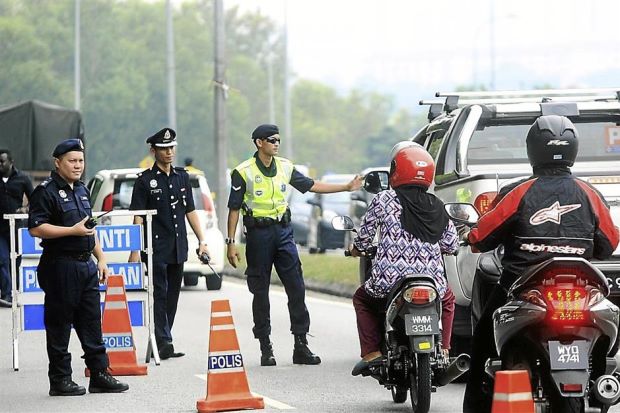Ever wondered how much is the summons rates you need to pay if you get nicked by the traffic police for an offence? We’ve put together this PDRM Traffic Summons Rates as a general guide. You may always check to see if you’ve been summoned at the Polis DiRaja Malaysia’s (PDRM) official site or through portals such as MyEG.
| First category offence | Vehicle type | Standardized summons rates (RM) | Examples of offences | ||
| 1 – 15 days | 16 – 30 days | 31 – 60 days | |||
| Offences relating to primary cause of accident, safety or road users, traffic congestion and public safety. | All types of vehicles incl. motorcycles below 250cc | 300 | 300 | 300 | 1. Driving above 40 km/h faster than speed limit. |
| 2. Failure to stop at red light. | |||||
| 3. Using mobile phone | |||||
| 4. Not wearing a helmet. | |||||
| 5. Going against traffic. | |||||
| 6. Using the emergency lane except for emergency purposes. | |||||
| Second category offence | Vehicle type | Standardized summons rates (RM) | Examples of offence | ||
| 1 – 15 days | 16 – 30 days | 31 – 60 days | |||
| Offences relating to negativve behaviour of driver and vehicle technical problem that activelu contributed to the accident, traffic congestion and public safety. | All type of vehicles | 150 | 200 | 300 | 1. Driving below 40 km/h faster than speed limit. |
| 2. Perforing U-turn where it is prohibited. | |||||
| Motorcycles below 250cc | 100 | 150 | 300 | 3. No driving license. | |
| 4. Stopping inside the yellow box. | |||||
| 5. Not adhering to “No Entry” sign. | |||||
| Third category offence | Vehicle type | Standardized summons rates (RM) | Examples of offence | ||
| 1 – 15 days | 16 – 30 days | 31 – 60 days | |||
| Vehicle technical problem which passively increases the risk of an accident, traffic congestion and public safety. | All type of vehicles | 100 | 150 | 250 | 1. Lights not working. |
| 2. Brake light not working. | |||||
| Motorcycles below 250cc | 50 | 100 | 150 | 3. Light is not turned on. | |
| 4. Side view mirror not installed. | |||||
| 5. Transporting unsuitable object on vehicle. | |||||
| Third category offence | Vehicle type | Standardized summons rates (RM) | Examples of offence | ||
| 1 – 15 days | 16 – 30 days | 31 – 60 days | |||
| Other offences not contained above that did not contribute to accident, traffic congestion and public safety. | All type of vehicles | 70 | 120 | 150 | 1. Expired driving license. |
| 2. Did not change vehicle ownership. | |||||
| Motorcycles below 250cc | 50 | 100 | 150 | ||
| 3. Not displaying “P” sign. | |||||
As you can see, traffic offences are divided into four main categories. However, certain offences don’t appear as clear cut. Take for example if a motorcyclist is riding a 1000cc motorcycle without a B (full-B) bike license and a full-B “L” license either. His offence is categorised as “having no valid motorcycle license.” If he has an “L”-license but didn’t display the L-stickers, his offence should fall under Category Four.
Another offence motorcyclists should take not is about not riding on the motorcycle lane where available. The offence is considered not adhering to a no entry sign.

There are non-compoundable offences, of course, such as riding with expired road tax. That would automatically mean that one is riding without insurance coverage. It’s an offence that sends one straight to the Majistrate’s Court and subject to the judge’s mercy.
Driving under the influence of alcohol or drugs could result being fined up to RM 5,000, a jail term and your license being revoked.
However, what kind of offence also depends on the issuing officer. So be nice if you get stopped.
Another thing to note is that the rates are standardised among PDRM, JPJ and DBKL. To encourage quick settlement of outstanding summons, the government has put the “The more you delay, the more you pay” initiative in place since 1st July 2013.
© Copyright – BikesRepublic.com 2024 Trademarks belong to their respective owners. All rights reserved